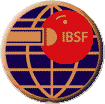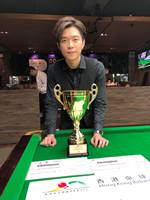國際球壇新聞 INT'L News
溫布萊大師賽歷史 The Masters History
2010-01-18 12:20
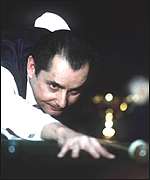
The first event was contested in 1975 when ten of the world’s top players were invited to the West Centre Hotel, in London.
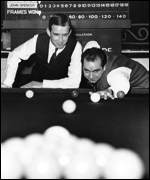 John Spencer was the first winner collecting a cheque for £2000 for his victory over Ray Reardon. The following year the event moved to the New London Theatre in London’s Drury Lane. There were again ten invited players and this time Ray Reardon took the title.
John Spencer was the first winner collecting a cheque for £2000 for his victory over Ray Reardon. The following year the event moved to the New London Theatre in London’s Drury Lane. There were again ten invited players and this time Ray Reardon took the title.
Among the invitees in 1977 was Doug Mountjoy who had just turned professional after winning the world amateur title.

This was to be his first pro event and he beat John Pulman, Fred Davis and Alex Higgins and, in the final, Ray Reardon, all former world champions, to take the prize which was still £2000. Alex Higgins was the winner in 1978 beating Cliff Thorburn, the first time that Reardon had failed to make the final.
In 1979 the tournament moved to its present home, the Wembley Conference Centre where audiences in excess of 2500 have become a regular feature. South Africa’s Perrie Mans took the title in that first Wembley year, his only major victory.
That year also, surprisingly, saw the first century break in the event with Alex Higgins, the runner-up, eventually setting a new tournament best of 132. Higgins emulated Ray Reardon when he reached his third successive final in 1980 but on this occasion it was Terry Griffiths who ran out the winner and took the first prize which by now had increased to £4500.
The field was increased to twelve in 1981 and Higgins and Griffiths were in the final again.
This time Higgins won his second title but the Welshman set a new high break record of 136.
Steve Davis won the first of his three Masters’ titles in 1982 with Griffiths the runner-up again.

In 1983, live television coverage helped to double the first prize to £16,000 and the field was increased to 16. The first round match between Alex Higgins and Bill Werbeniuk had snooker’s biggest ever audience of 2,876. Cliff Thorburn took the title with a victory over Ray Reardon.

1984 saw the event’s first, and so far only, maximum by Kirk Stevens. It came in his semi-final against Jimmy White but it was White who took the title. For the first time that year, entry was confined to the top 16 in the world rankings and the first prize had leapt again to £35,000.
 Cliff Thorburn became the first to win successive titles in 1985 and 1986 while Dennis Taylor was the winner in 1987 against Alex Higgins, appearing in his fifth final. 1988 was memorable for total whitewash in the final. Steve Davis beat the unfortunate Mike Hallett 9-0.
Cliff Thorburn became the first to win successive titles in 1985 and 1986 while Dennis Taylor was the winner in 1987 against Alex Higgins, appearing in his fifth final. 1988 was memorable for total whitewash in the final. Steve Davis beat the unfortunate Mike Hallett 9-0.
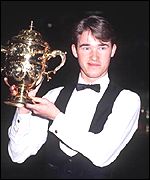 The Hendry era began in 1989. The 20 year-old Scot was appearing in his first Masters and he went on to win it - and remained unbeaten in the event for the next five years until fellow Scot, Alan McManus beat him in the 1994 final. Meanwhile the sponsors had introduced two wild cards in 1990 which gave them the opportunity of ensuring a place for the crowd’s favourites like Alex Higgins.
The Hendry era began in 1989. The 20 year-old Scot was appearing in his first Masters and he went on to win it - and remained unbeaten in the event for the next five years until fellow Scot, Alan McManus beat him in the 1994 final. Meanwhile the sponsors had introduced two wild cards in 1990 which gave them the opportunity of ensuring a place for the crowd’s favourites like Alex Higgins.
The following year they began the Benson & Hedges Championship, an event for players outside the top 16, and one of the wild card places in the Masters has been given to the winner of this event ever since. In 1991 the winner’s prize reached six figures for the first time.
In 1995 the Wembley fans found a new hero as Ronnie O’Sullivan became the youngest winner with a 9-3 win over John Higgins and he was back in the final the next year only to see Stephen Hendry take a sixth title.
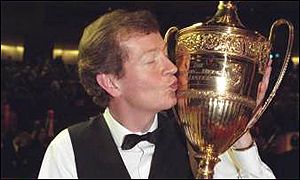 O’Sullivan was in the 1997 final as well but it was Steve Davis who turned back the clock to win 15 years after his first Masters title.
O’Sullivan was in the 1997 final as well but it was Steve Davis who turned back the clock to win 15 years after his first Masters title.
The 1997 final will be long remembered for the first appearance of a streaker at a snooker event.

The 1998 final saw a re-spotted black in the deciding frame and Mark Williams held his nerve over Hendry to take the title back to Wales for the first time for eighteen years.
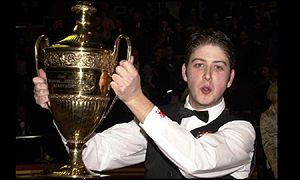 Matthew Stevens won for Wales again in 2000 but not without some drama in the final. Ken Doherty, who had lost in the 1999 final to John Higgins, was on for the event’s second 147. He only required to pot the final black – and he missed it.
Matthew Stevens won for Wales again in 2000 but not without some drama in the final. Ken Doherty, who had lost in the 1999 final to John Higgins, was on for the event’s second 147. He only required to pot the final black – and he missed it.
The next two years belonged to Paul Hunter who won both finals in the deciding seventeenth frame to become only the third player to successfully defend his title.

The banning of tobacco sponsorship meant that the 2003 event, won by Mark Williams, was the last under the Benson & Hedges banner but it is unthinkable that such a high profile event will be allowed to die.
Paul Hunter was back on the winner's podium in 2004, after a thrilling last frame victory over Ronnie O'Sullivan, to become only the third man in Masters' history to lift the title three times.
O'Sullivan bounced back in 2005, producing a MASTER-class of near perfect snooker to overwhelm John Higgins 10-3 in the final.

It was John Higgins turn for revenge in a remarkable 2006 final, as he edged out O'Sullivan in the deciding frame. Stuart Bingham won the qualifying event, to join the Wembley field, and compiled a 147 in the process.
Bingham won the qualifying event for the second year running to book his place at the new Master venue, the Wembley Arena.
The second wildcard, Jimmy White, lost 6-1 to Matthew Stevens, in what, could well be the last appearance at Wembley of London's favourite son.
Once at Wembley Bingham lost out narrowly, 6-5 to Ali Carter. Carter, in turn was trounced 6-1 by Ken Doherty, who gave O'Sullivan his hardest match, only losing 6-5.
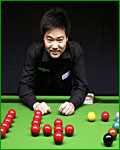 Ding Junhui compiled only the second ever Masters Maximum, during his first round win against Anthony Hamilton. The young Chinese star went on to reach the final, where he faced Ronnie O'Sullivan in imperious form. And it wasn't long before Ding was slumped in his chair as O'Sullivan piled on the points and pressure, including five superlative centuries.
Ding Junhui compiled only the second ever Masters Maximum, during his first round win against Anthony Hamilton. The young Chinese star went on to reach the final, where he faced Ronnie O'Sullivan in imperious form. And it wasn't long before Ding was slumped in his chair as O'Sullivan piled on the points and pressure, including five superlative centuries.
O'Sullivan ran out a 10-3 winner, and such was Junhui's capitulation that, in some confusion, he even attempted to concede the match a frame early.

2008 belonged to Mark Selby, making his first appearance in the Masters, he ran out an assured 10-3 winner against Stephen Lee, who belied his recent poor form by reaching the final.
2009 saw Ronnie O'Sullivan back in the winners' circle with a hard fought 10-8 win over defending champion Mark Selby.
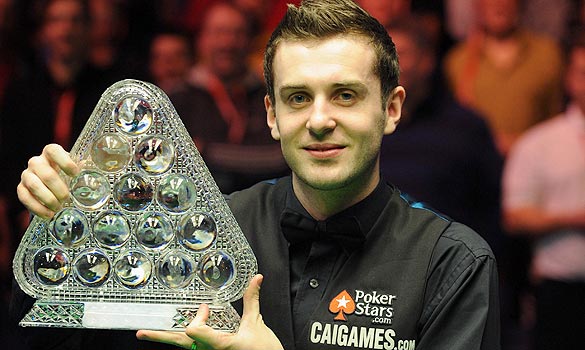
2010 Mark Selby producing an astonishing fight-back to beat Ronnie O'Sullivan 10-9 in the Pokerstars.com Masters final.
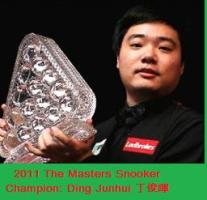 2011 Ding Junhui marked an historic all asian final match against Marco Fu of Hong Kong, China to be the 3rd overseas player to win the Masters. The tournament made history as it was the first to feature two Asian players in the final. Ding Junhui won the final, 10–4 against Marco Fu.
2011 Ding Junhui marked an historic all asian final match against Marco Fu of Hong Kong, China to be the 3rd overseas player to win the Masters. The tournament made history as it was the first to feature two Asian players in the final. Ding Junhui won the final, 10–4 against Marco Fu.



